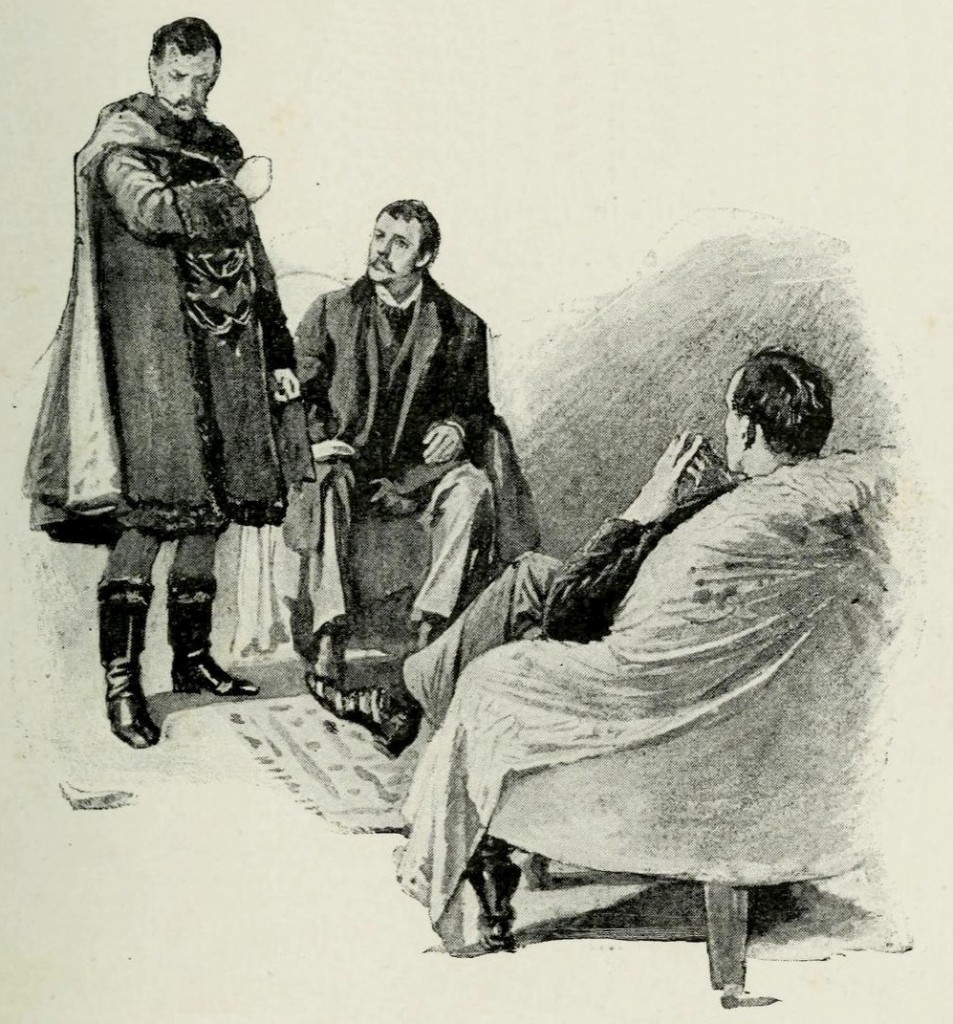This past Sunday, the weather being pleasant and our getting home from church with fair promptness, I fixed a cottage cheese and lunchmeat lunch and took it to the sun porch to read. Or maybe this is more of a Florida room, except it’s elevated—an appendage to the house fitted with some expensive heating units (that we never use) and without air conditioning. I decided I would get back to reading in the letters of A. Conan Doyle (http://www.goodreads.com/book/show/359482.Arthur_Conan_Doyle).
our getting home from church with fair promptness, I fixed a cottage cheese and lunchmeat lunch and took it to the sun porch to read. Or maybe this is more of a Florida room, except it’s elevated—an appendage to the house fitted with some expensive heating units (that we never use) and without air conditioning. I decided I would get back to reading in the letters of A. Conan Doyle (http://www.goodreads.com/book/show/359482.Arthur_Conan_Doyle).
It probably helped that the last time I went to Barnes & Noble I bought, from the discount table, a two-volume set of the Sherlock Holmes stories, arranged chronologically. The first, A Study in Scarlett, was published in 1887. When last I read in this book I was somewhere around 1885 or 1886, so I knew I was getting close to that momentous occasion.
Unfortunately, the editor wrote that not many of Doyle’s letters between 1885 and 1890 survived. For some reason his correspondents didn’t keep them, I guess. So in the book I moved into this period with mainly editorial comments and brief, and sometimes unattributed, references to the various autobiographical works of Doyle.
At this time he had three novels circulating among publishers, with one of them A Study in Scarlett. He stated he had high hopes for the novel, but he also thought another was better. But all of his novels received rejections, and went off to another place. Doyle bemoaned that sometimes they weren’t even read. If only the editors would read them they would like them.
Finally a publisher offered him £25 for the copyright, with no royalties. Doyle held out; he wanted royalties. The publisher didn’t budge. Nothing else was selling. His medical practice was paying most of the bills, but literature was where he really wanted to be. Finally he took the offer, and Scarlett was published in December 1887, not as a stand-alone book first but in an annual.
Reviews initially weren’t great. The normal number of copies of that annual were printed. That’s as far as I got with my reading on Sunday. Sherlock Holmes had seen the light of day, but was still mostly unknown. This coming Sunday, hopefully, I’ll move into the period of 1888 and beyond when Holmes became the most famous fictional detective, and Doyle practically a household name.
Is this encouraging me to at all while I’m in a very dry period of my publishing career, dry in terms of sales, not of ideas and production. Not really. If publishers and initial readers can’t see genius in the work of A Conan Doyle, what hope is there for me? Twenty years later a copy of that annual sold at auction for more than £150,000. That offers some encouragement.
Though in twenty years I’ll be 81. Alas.